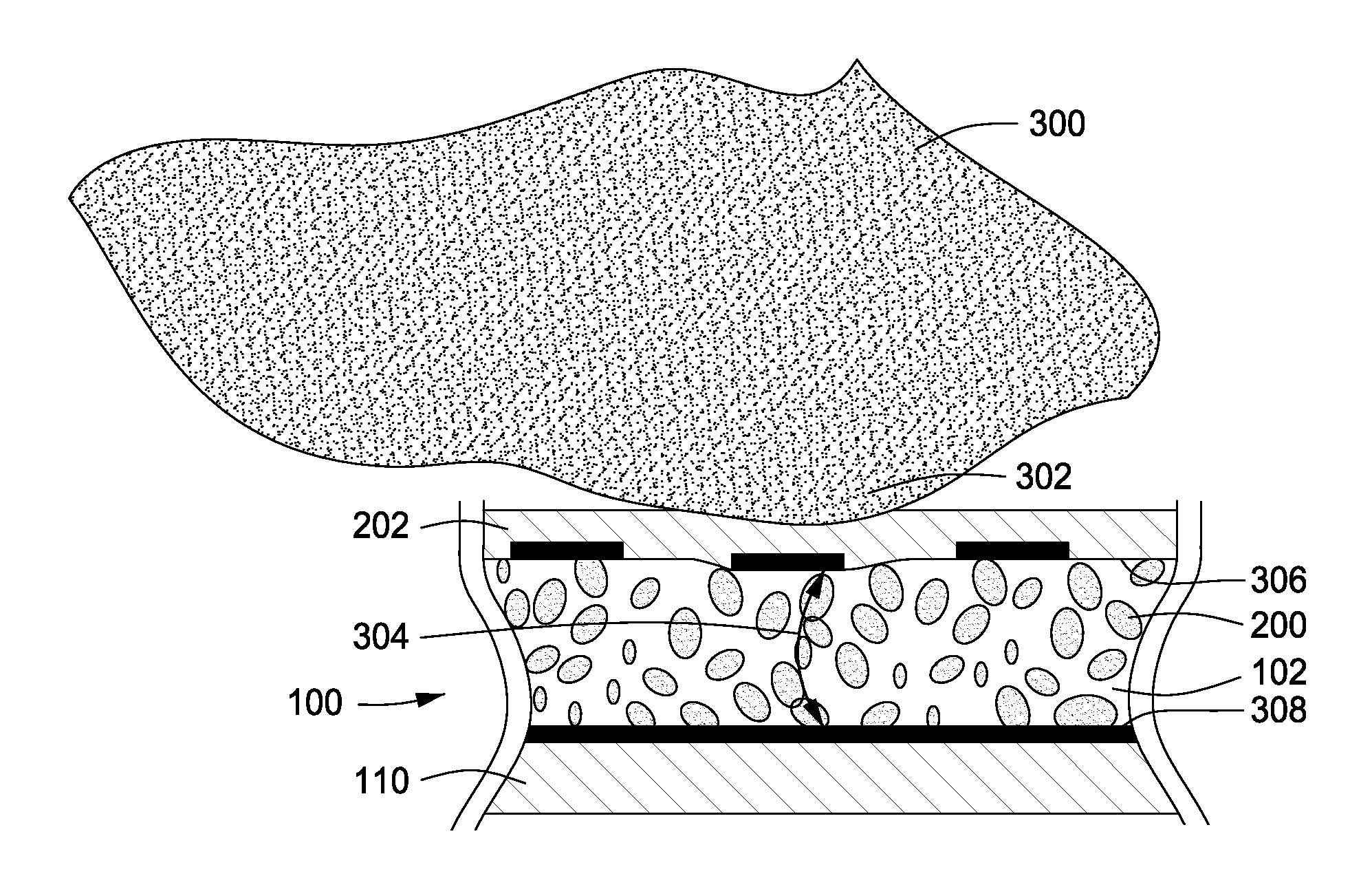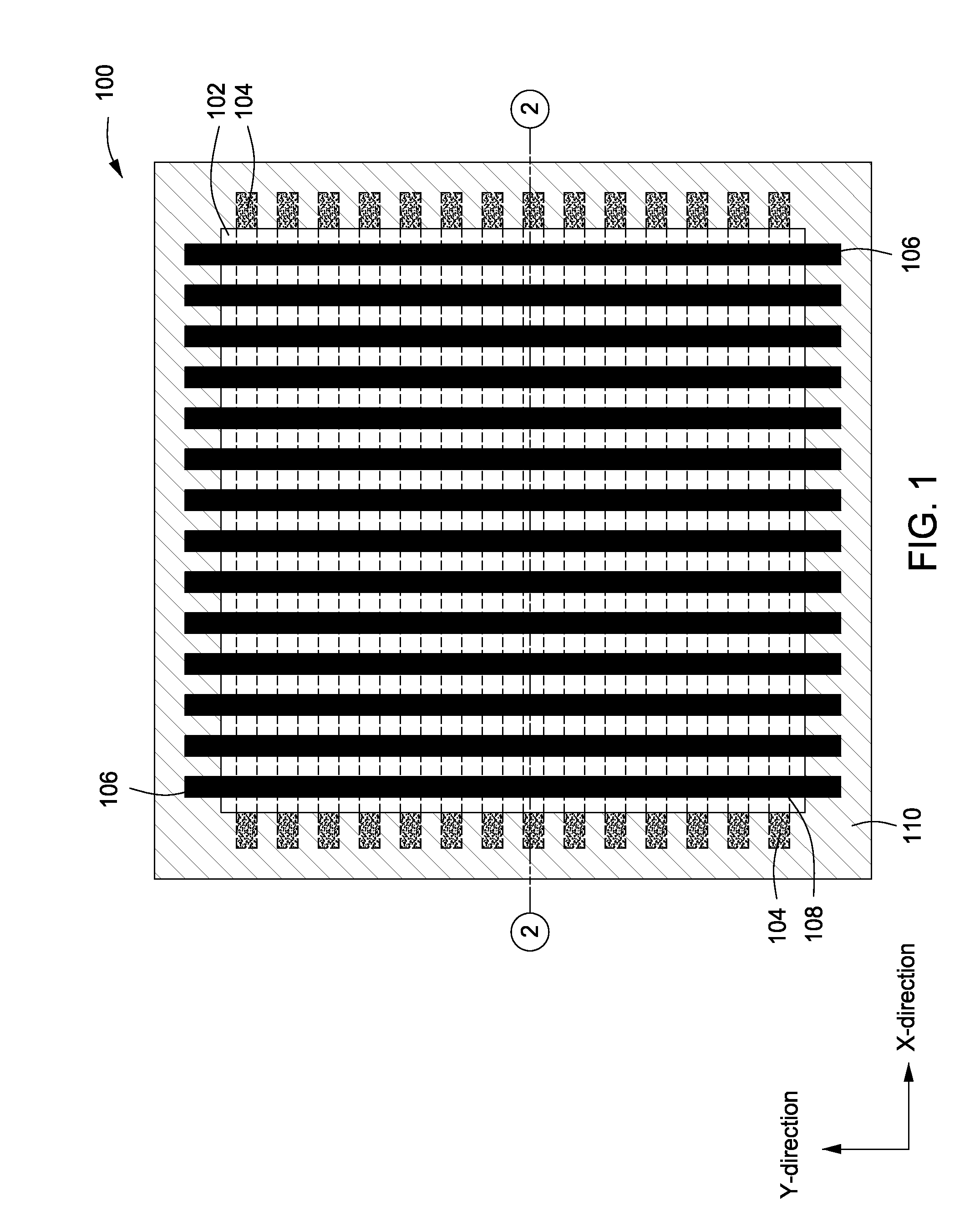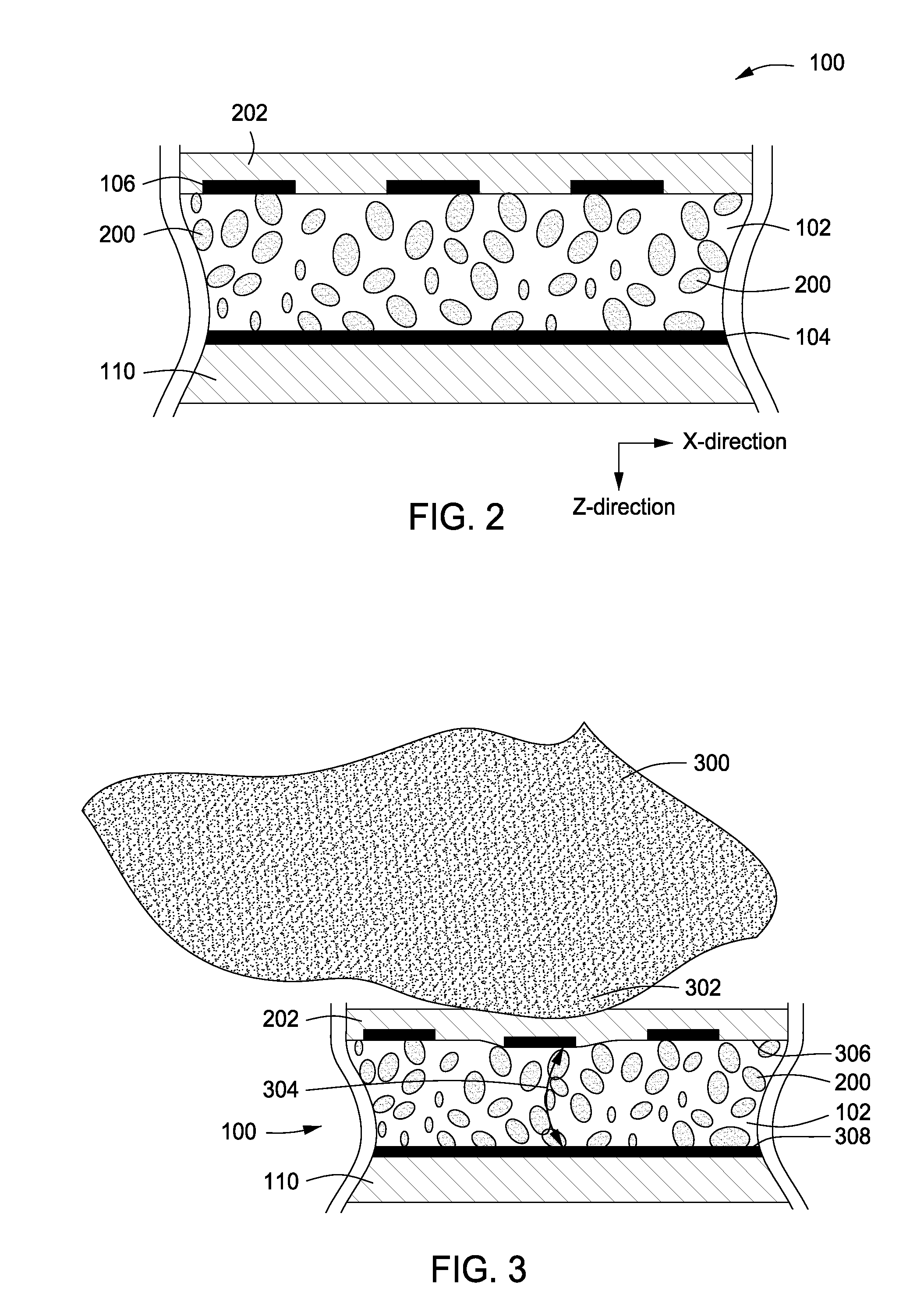Flexible Fingerprint Sensor
a fingerprint sensor and flexible technology, applied in the field of pressure sensors, can solve the problems of significantly lower electrical power consumption of the device per fingerprint image capture operation, and achieve the effects of low cost, less manufacturing cost, and adequate resolution
- Summary
- Abstract
- Description
- Claims
- Application Information
AI Technical Summary
Benefits of technology
Problems solved by technology
Method used
Image
Examples
first embodiment
[0042]Now referring to FIG. 1, a top view of a flexible fingerprint sensor 100 in accordance with the present invention is shown. A simplified 14×14 array is shown for discussion purposes; however, a practical implementation would have at least 200-300 lines on each side. The fingerprint sensor 100 includes of a series of layers of materials. At the center is a bulk soft, compressible and elastic material, such as a polymer or an elastomer (hereinafter referred to as the base material or composite material 102). The base material or composite material 102 is impregnated with small electrically conductive particles (not shown). In other words, the conductive particles are at least partially embedded in an elastomeric layer. The conductive particles can be metal, core particles having a conductive coating, carbon nanotubes, carbon nanofibers, conductive fibers, or a combination thereof. The conductive particles are distributed homogeneously with no relative orientation within the comp...
second embodiment
[0049]Referring now to FIGS. 6 and 7, a top view (FIG. 6) and a cross section view (FIG. 7) of a flexible fingerprint sensor 600 in accordance with the present invention are shown. In this embodiment, it is possible to eliminate the top-most layer of conductor carrying material. This is useful in order to further increase the spatial resolution of the sensor by eliminating any special buffering that this top layer exhibits. The column (y-direction) conductors are still required in order for the electrical scanning circuit to be completed. The flexible pressure sensor 600 has a first set of substantially parallel conductors 104 in the x direction and a composite material 102 in contact with the first set of conductors 104. The composite material 102 includes a first set of conductive particles 602 and a second set of conductive particles 200 all of which are at least partially embedded in an elastomeric layer that is capable of returning to substantially its original dimensions on re...
third embodiment
[0052]Referring now to FIG. 10, a cross sectional view of a flexible fingerprint sensor 1000 in accordance with the present invention is shown. The flexible pressure sensor 1000 has a composite material 102 that includes a first set of conductive particles 1002, a second set of conductive particles 602 and a third set of conductive particles 200 all of which are at least partially embedded in an elastomeric layer that is capable of returning to substantially its original dimensions on release of pressure. The first set of conductive particles 1002 are electrically connected to form a first set of substantially parallel conductors 1004 within a lower portion of the elastomeric layer in the x direction. The second set of conductive particles 602 are electrically connected to form a second set of substantially parallel conductors 604 within an upper portion of the elastomeric layer in the y direction. The third set of conductive particles 200 have no relative orientation and are dispos...
PUM
 Login to View More
Login to View More Abstract
Description
Claims
Application Information
 Login to View More
Login to View More - R&D
- Intellectual Property
- Life Sciences
- Materials
- Tech Scout
- Unparalleled Data Quality
- Higher Quality Content
- 60% Fewer Hallucinations
Browse by: Latest US Patents, China's latest patents, Technical Efficacy Thesaurus, Application Domain, Technology Topic, Popular Technical Reports.
© 2025 PatSnap. All rights reserved.Legal|Privacy policy|Modern Slavery Act Transparency Statement|Sitemap|About US| Contact US: help@patsnap.com



